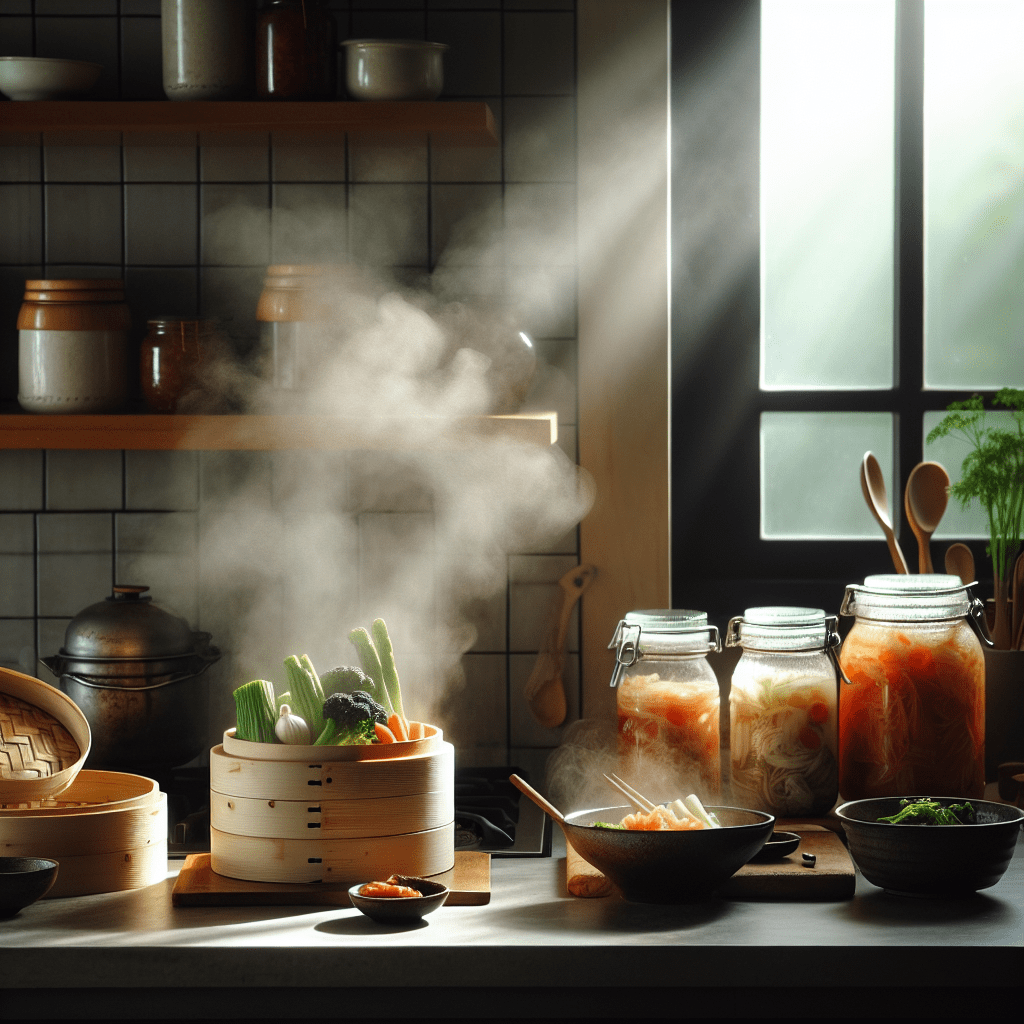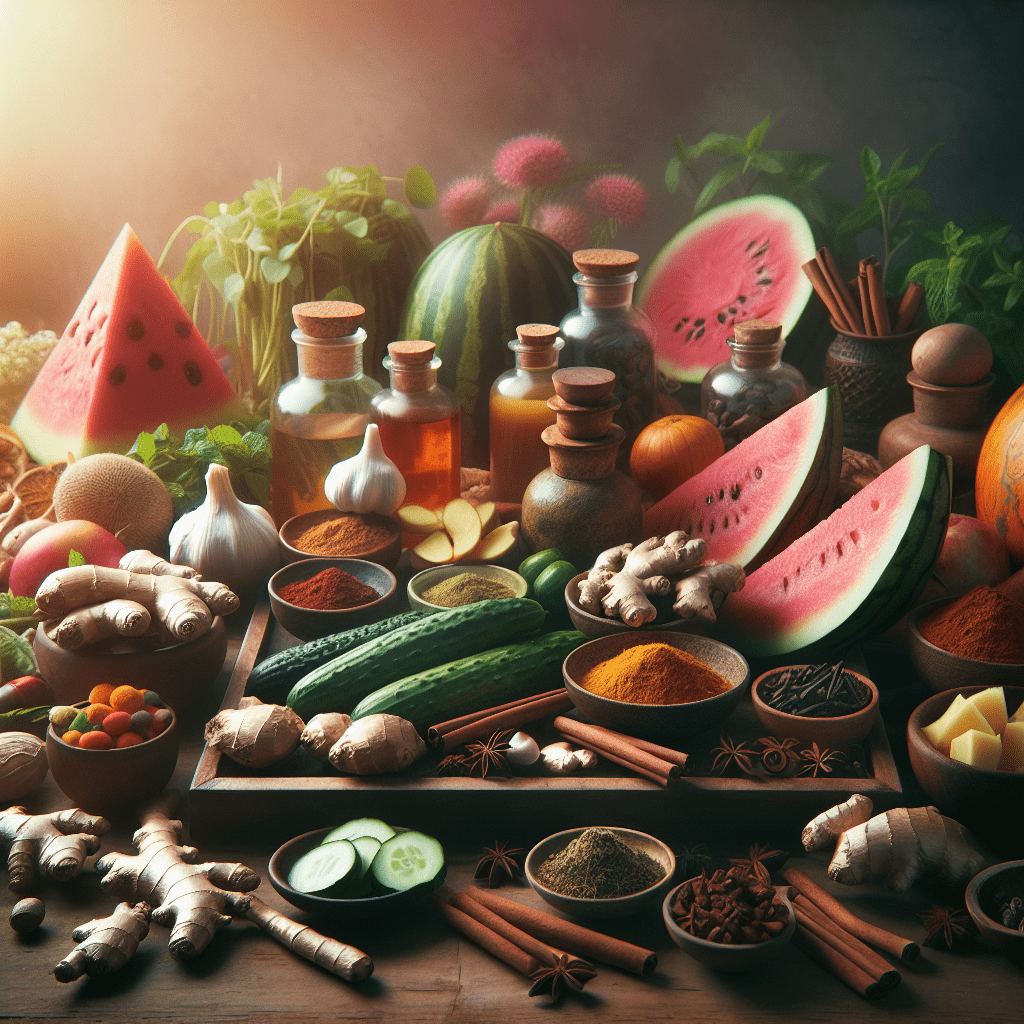In a world where modern medicine often takes center stage, there’s a quiet revolution happening in kitchens across the globe. People are rediscovering what our ancestors knew instinctively: food is more than just sustenance—it’s medicine. Therapeutic nutrition, the practice of using food to heal and nourish the body, isn’t a new concept. In fact, it’s as old as human civilization itself.
Ancient healing traditions from Greece to China embraced the philosophy that the right foods, prepared in the right ways, could prevent illness and restore health. Hippocrates, the father of modern medicine, famously advised, “Let food be thy medicine and medicine be thy food.” This wisdom has stood the test of time, and today, as we face a myriad of lifestyle-related health challenges, it’s more relevant than ever.
The secrets to making your food truly medicinal often lie not just in what you eat, but in how you prepare it. Ancient cooking techniques preserved and sometimes even enhanced the healing properties of ingredients, turning simple meals into powerful health elixirs. Let’s uncover these time-tested cooking secrets that can transform your kitchen into a pharmacy of natural wellness.
1. The Art of Gentle Steaming: Preserving Nature’s Medicine
One of the oldest and most effective methods of therapeutic nutrition comes from Eastern culinary traditions: steaming. This gentle cooking technique uses water vapor to cook food without submerging it in water, preserving delicate nutrients that would otherwise be lost.
When vegetables are steamed, they retain up to 70% more vitamins and minerals compared to boiling. This is particularly important for water-soluble vitamins like B and C, which easily leach into cooking water. The ancient Chinese, masters of therapeutic nutrition, understood this principle well. They used bamboo steamers to prepare medicinal foods, recognizing that this method maintained the vital qi (energy) of the ingredients.
To incorporate this ancient wisdom into your modern kitchen, invest in a quality steamer basket or bamboo steamer. Try steaming leafy greens like kale or spinach just until they brighten in color—this indicates their nutrients are intact while being made more bioavailable. For an authentic therapeutic approach, add healing herbs like ginger or lemongrass to the steaming water, allowing their essence to infuse the food.
2. Quick Blanching: The Forgotten Technique of Nutrient Activation
Blanching—briefly immersing ingredients in boiling water followed by an ice bath—is another ancient method that plays a crucial role in therapeutic nutrition. This technique was used throughout ancient Mediterranean and Asian cultures not just for preservation, but to make certain nutrients more accessible to the body.
What many don’t realize is that blanching can actually increase the antioxidant capacity of certain vegetables. Take tomatoes, for example—a quick blanch makes their lycopene (a powerful antioxidant) more bioavailable than in raw form. The same applies to certain cruciferous vegetables, where blanching deactivates enzyme inhibitors that can interfere with nutrient absorption.
The key to therapeutic blanching is timing—too long and nutrients are lost, too brief and the benefits aren’t unlocked. The perfect blanch usually takes just 30-60 seconds, followed by immediate cooling. This method respects the integrity of the food while maximizing its healing potential—a principle deeply embedded in traditional therapeutic nutrition approaches.
3. Microwave Cooking: Ancient Wisdom Meets Modern Technology
While microwaves might seem like the antithesis of ancient cooking wisdom, they actually operate on principles that align perfectly with therapeutic nutrition goals. Microwaves cook food quickly with minimal water, which means water-soluble vitamins have less opportunity to escape.
Studies have shown that microwave cooking preserves more vitamin C and other antioxidants than almost any other cooking method. This mirrors the ancient preference for quick cooking methods that don’t expose ingredients to prolonged heat. In many ways, microwaving is the modern equivalent of flash-cooking techniques used in traditional Chinese medicine, where ingredients were quickly heated to preserve their medicinal qualities.
For therapeutic microwave cooking, use ceramic or glass containers rather than plastic, add minimal water to vegetables, and cook in short intervals to prevent overcooking. This approach honors both ancient wisdom and modern science in therapeutic nutrition practices.
4. Pressure Cooking: Ancestral Technique in Modern Form
Pressure cooking might seem like a modern invention, but its roots go back centuries. Traditional cooking vessels in parts of Africa and Asia used tightly fitted lids and steam pressure long before the industrial revolution. These early pressure cooking methods were valued for their ability to extract maximum nutrition from ingredients while preserving their medicinal properties.
Today’s pressure cookers operate on the same principle but with enhanced safety and efficiency. By raising the boiling point of water through increased pressure, they cook food at higher temperatures without destroying heat-sensitive nutrients. This makes pressure cooking ideal for therapeutic nutrition, especially when preparing medicinal broths and healing stews.
One standout benefit is the pressure cooker’s ability to break down tough fibers in beans, grains, and root vegetables, making their nutrients more bioavailable. It also preserves up to 90% of vitamin C content compared to regular cooking methods that might preserve only 50%. For anyone practicing therapeutic nutrition, a pressure cooker is an invaluable tool that connects ancient wisdom with modern convenience.
5. Air Frying: Healthy Adaptation of Traditional Roasting
Air frying represents a fascinating modern interpretation of ancient dry-heat cooking methods like roasting. Throughout history, cultures developed various techniques to cook food with hot air, recognizing that this method preserved certain beneficial compounds while creating new ones through the Maillard reaction (the browning process that develops flavor).
The air fryer modernizes this concept, using rapidly circulating hot air to create the same effect as traditional roasting but with minimal oil. From a therapeutic nutrition standpoint, this is significant—it allows you to enjoy the flavor-enhancing benefits of roasting while reducing potentially inflammatory oils.
Studies show that air frying produces fewer harmful compounds like acrylamide compared to deep frying, while still achieving the same satisfying texture. For maximum therapeutic benefit, try air frying vegetables like Brussels sprouts or sweet potatoes, which develop enhanced antioxidant profiles when exposed to dry heat. Add anti-inflammatory spices like turmeric or cinnamon before cooking to further boost the medicinal properties of your meal.
6. Slow Cooking: The Ancient Art of Transformative Healing
Perhaps no cooking method better embodies therapeutic nutrition principles than slow cooking. From Native American healing stews to Asian medicinal broths, cultures worldwide recognized the power of gentle, prolonged heat to transform ingredients into potent medicine.
Slow cooking works its magic in multiple ways. First, it breaks down tough fibers and cell walls in plants and animal products, making nutrients more accessible. Second, it allows for the extraction of beneficial compounds from herbs, bones, and roots that wouldn’t be released with quicker methods. Finally, it preserves heat-sensitive nutrients that might be destroyed by high-temperature cooking.
A traditional bone broth, simmered for 24-48 hours, exemplifies therapeutic slow cooking. During this time, collagen transforms into easily absorbed gelatin, minerals leach from bones into the broth, and immune-supporting amino acids become abundant. Similarly, a slowly cooked bean stew allows for maximum mineral extraction while neutralizing anti-nutrients that might otherwise block absorption.
Modern slow cookers make this ancient practice accessible for everyday use. For maximum therapeutic benefit, include medicinal ingredients like astragalus root, reishi mushrooms, or seaweeds in your slow-cooked creations, allowing their healing compounds to fully infuse into your meal.
7. Fermentation: Microbial Alchemy in Your Kitchen
Perhaps the most powerful secret in the therapeutic nutrition arsenal is fermentation—a practice dating back thousands of years. Every traditional culture discovered fermentation independently, suggesting its fundamental importance to human health. From Korean kimchi to German sauerkraut to Indian dosas, fermented foods feature prominently in the world’s oldest healing traditions.
Fermentation transforms ordinary foods into nutritional powerhouses through the action of beneficial microbes. These microorganisms pre-digest complex compounds, making nutrients more bioavailable, creating new beneficial substances, and populating our digestive systems with health-promoting bacteria.
The therapeutic benefits are remarkable. Fermented foods contain up to 100 times more bioavailable B vitamins than their unfermented counterparts. They help balance gut flora, strengthen immune function, and even produce compounds that support mental health—a connection recognized by traditional healing systems long before modern science confirmed the gut-brain axis.
Starting your fermentation journey can be as simple as making a basic sauerkraut—just cabbage and salt transformed by time and beneficial bacteria into a living medicine. For those new to fermentation, beginning with kefir (fermented milk) or kombucha (fermented tea) offers an accessible entry point to this transformative cooking method.
Integrating Ancient Wisdom with Modern Knowledge
These seven ancient cooking secrets form the foundation of therapeutic nutrition, but their power is magnified when combined with modern understanding of personalized health. Every individual has unique nutritional needs based on their constitution, current health status, and even the changing seasons—a principle long recognized in Eastern medical traditions.
Today, platforms like HerbalsZen’s EASTCHI AI are bridging the gap between these ancient healing philosophies and modern technology. By analyzing individual constitutional types through the lens of Five Element Theory and incorporating seasonal wisdom, EASTCHI AI offers personalized therapeutic nutrition guidance tailored to each person’s specific needs.
This integration represents the future of health—where time-tested cooking methods that maximize food’s medicinal properties are combined with personalized recommendations based on both ancient wisdom and modern science. The result is a truly holistic approach to therapeutic nutrition that honors food as our most fundamental medicine.
As you explore these ancient cooking secrets in your own kitchen, remember that you’re participating in a healing tradition thousands of years in the making. Each steamed vegetable, slowly simmered broth, or jar of fermenting vegetables connects you to an unbroken chain of human wisdom about food as medicine—wisdom that’s never been more relevant than it is today.
By embracing these therapeutic nutrition principles and cooking methods, you transform your kitchen into a place of healing and your meals into medicine—perhaps the most powerful prescription for health in an age of complex health challenges.




